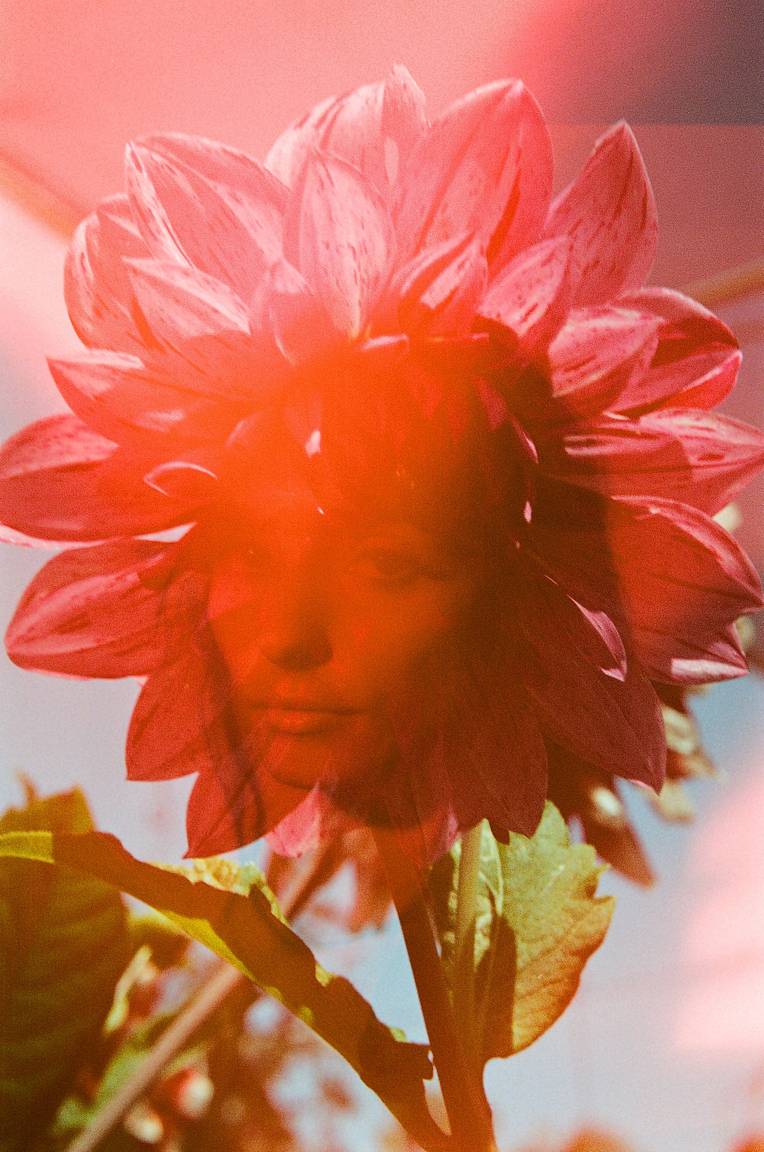Mastering Multiple Exposures with Mike Walrond
1 27 Share TweetEver wondered how to achieve a multiple exposure technique in your photography? Check out this gorgeous series by Mike Walrond, where he experiments with layering flowers and portraits to create unique and colorful images. Read more about his series and technique here!
Hi Mike. Welcome to the Lomography Magazine. Please introduce yourself to our community.
I’m Mike, a.k.a. SHDWSOFDUST. Greetings and Salutations fellow analogers.
How did you get into photography and why do you choose film over digital?
I got into photography by accident. I’m ashamed to say this but I use to have no love for photography as a medium, I had a really terrible first experience in art school that made me disconnect with it. About three years ago, I was working in the creative corporate world in Los Angeles. I was part of a huge team doing 50 international commercials for Procter & Gamble's Tampax brand. During the project, I met the creative director, Christopher Everett, and we became fast friends. Back then, I was deeply consumed by graphic art/editing images. Everett looked at my work and said, "Stop using other people's images to create your art!" I can't remember if it was days or a week later, but Everett showed up with a Leica Dlux and gave it to me. From that point on, I made it my mission to manipulate images without any post-production or editing software. I used projections, colored light, iridescent origami paper as filters, and space blankets as backdrops.
Digital photography was a very transformative journey for me, It was an awesome year of unfiltered creativity. My second year of photography I was introduced to film. My studio neighbor August Williams at ArtHatch Studios asked me, "Why don't you shoot film?" It never occurred to me to shoot film or even to try it. August sold me my first film camera, a Canon AE-1 for 75 bucks. My first portrait session I had no idea what the hell I was doing. I just knew film would be darker due to the lighting. By instinct, I pushed the film. It was Ilford HP5 400 film to 100 ISO. The images turned out amazing and I was purely entrapped by film's hypnotic depth and haven't gone back since.
Tell us a little bit about your flower-double-exposure series. What sparked the idea?
I'm an experimental person by nature and I'm always trying to push the boundaries of my film photography. I started doing double exposures after a friend gave me some beautiful peonies for my birthday. I'd been doing research on how to trick your camera into doing double exposures using the rewind button/film advance method. It seemed like it would be the perfect time to attempt it. That was a year and a half ago, and I'd been jumping around from concept to concept and wanted to really dive into the series and take it further. This year, I decided to shoot the series continuously for my solo show in February 2020 at Teros Gallery in San Diego.
For me there's no perfect method to double exposures, it's a lot of trial and error, luck, and experimentation. Most of the time you're in agony, but sometimes the stars align and the film gods answer your prayers with an exposure you never could have dreamt of.
What gear did you use to shoot this series with and why?
I have a 52mm Nikon portrait lens so it would be impossible for me to do double exposure flower portraits with it. I use close up filters which work like a magnifying glass. I finally got my dream camera last year — it's a Nikon F3 with motor drive. The motor drive allows me to not have to worry about advancing the film and I can shoot continuously and uninterrupted. This is especially helpful when trying to capture butterflies. Also, I have to give Bob at Photo Darkroom a shout out. He gave me the close-up filters as a birthday gift and some tips and tricks for double exposures, like marking the back of the film.
Experimental photography on film like yours is usually a lot of trial and error. For how long have you been working on this series and how was the process for you of getting the images you wanted?
It's been about two years of playing with double exposures, and I've been working on the flower series for a year and a half, off and on. As for the process, it's about finding the balance of exposures. You really don't know what you're going to get, but finding a system that works for you makes it a million times easier.
Where do you draw your inspiration from?
Life, music, art, conversation, my fellow analog photographers. For me, it's about conceptualizing, or taking your inspiration and pushing your vision further and beyond where you thought possible.
Any tips for people who would like to get into multiple exposure photography?
Find the right exposure sequence and test out a few different films first. Find the right one for the concept or idea you're creating — it will make all the difference. I've had the best luck with Lomography's CN 100, Fuji Film C200, Kodak E100 Ektachrome, Cinestill BW DoubleXX, and Ilford HP5 400 Film.

























One Comment